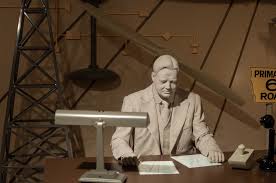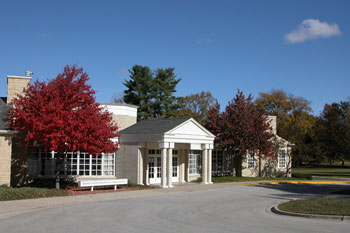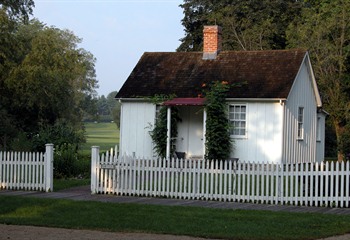I read a biography of Hoover (reviewed elsewhere on this blog) and found the man in retirement shown there to be unsympathetic and unimpressive. However that experience bore unexpected fruit. Having driven by the exit for the Hoover Library more than once on I-80 I decided to have a look next time. The time came in November 2013.

To anticipate the conclusion, I found the Hoover presented there far more interesting and complex than that sullen ex-president I had read about. I left with no doubt that Hoover was a great man (defined as someone who does things few others possibly could) and that his great deeds were done before he became president.
He took the oath of office in March 1929 and The Great Depression started with a cataclysm in November of that year. Yes, he tried to stem it and ameliorate it but with little Congressional co-operation (which FDR later enjoyed). He got run over by History.
What great things did he do earlier? He was in England when World War I started and was one of the principal organizers of a boat-lift to evacuate about 15,000 Americans from Great Britain. There he, and the world, found the seed of his genius. He was a dynamic and innovative organizer.
He then led a food relief program in 1914-1917 for Belgium (the neutrality of which had been ignored by the belligerents), negotiating with American, French, German, and Belgium governments to import food to Antwerp throughout the war. When the United States ended neutrality and entered the war, Hoover’s program expanded to France. At times the program was giving a hot lunch to three million people a day!
In order to attract the donations to support it, he identified himself closely with the program and poured in his own money (made out of mining in Australia), encouraging others to do so as well. They did, the Astors, Rockefellers, Vanderbilts, and their kind. Most of the money he raised from private donors. He asked millionaires for millions, and got it.
At the time and later this program elicited such an outpouring of thanks that it still reverberates. He made millions of friends for himself and for the United States.
When the United States entered the war, President Wilson asked Hoover to look after food at home. He did. There were meatless Mondays, milk-less Tuesdays, flour-less Wednesday, and so on, to conserve food (and so free manpower for war work and the army). He advocated the use of cooking oil in place of lard (used in packing cartridges). It was the patriotic duty on the home front to be ‘With Hoover’ in these practices. He was on the radio, in the newspapers, on the stump explaining why this was to be done. He was whirlwind.
When the war ended he went back to Europe to oversee European-wide food relief for France, Germany, Belgium, Austria and more. He was akin to a one-man Marshall Plan, raising money with one hand and ladling out soup with the other. His double effort in Europe saved millions of lives, earning the amity of a generation. Few other presidents made so many friends for the USA.
When Calvin Coolidge succeeded to the presidency, he appointed Hoover Secretary of Commerce. The whirlwind increased its speed! He was soon called the Secretary for Everything. Here he is at his desk in the museum.

But this cartoon from the explanatory video conveys much more. Click it and see for yourself.
File
He promoted vaccines for children, and raised the money from private donors to support it. He also drove a national program for standardization of everything from screw heads to milk bottles, arguing that the lack of standardization was crippling the economy and destroying private life because it consumed untold time and money. On one side of town milk bottles were one shape and size and on the other side they were different. He set up committees with governors and simply would not leave the room until they agreed on a plan to reduce expensive and time consuming variations.
So many of the standards we assume today, he made into reality. Too bad his like is not with us today to impose standards on the IT world.
In 1927 the Mississippi River flooded, killing scores and displacing thousands. President Coolidge recognized it as a national disaster and he sent one man to deal with it: Herbert Hoover. The next day tent cities and field kitchens sprouted along the shores, and hundreds of thousands of American slept on Hoover cots and ate a Hoover lunch (soup and bread). These were the first Hoovervilles. Here he was a one-man FEMA (look it up).
In 1928 Hoover walked into the Republican nomination and defeated Democrat Al Smith, a Tammany Hall wet who did not hold even the Solid South, such was Hoover’s command.
Then the freight train of HISTORY roared into view …..
The Hoover Library, the smallest of the Presidential Libraries, is wonderful.

The presentations are multi-media with plenty of buttons and bells for kids. It includes artifacts from his life, like European mails bags full of letters of thanks, and newspaper cartoons. It pulls no punches about the Depression and his inability to cope with it. Once again the National Parks Department sets the standard for conveying history briefly but in a compelling manner even to a jaded cynic with a made-up mind.
The two room house he was born in is on the grounds. From this modest beginning….

